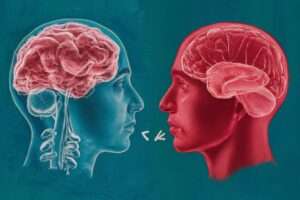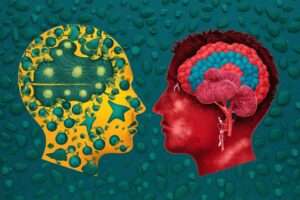Chlamydia vs. Gonorrhea: Understanding the Differences, Symptoms and Treatment
Sexually transmitted infections (STIs) are a common concern for sexually active individuals. Among these, chlamydia and gonorrhea are two of the most frequently encountered bacterial infections. While they share some similarities, understanding the differences between these two STIs is crucial for proper diagnosis, treatment, and prevention. In this comprehensive guide, we’ll explore chlamydia and gonorrhea in detail, comparing their symptoms, causes, diagnosis methods, treatments, and long-term effects.
Butyric Acid: The Gut-Friendly Compound You Need to Know About

Table of Contents
ToggleWhat Are Chlamydia and Gonorrhea?
Chlamydia and gonorrhea are both bacterial infections that primarily affect the genital area. However, they are caused by different bacteria and can have distinct characteristics.
Syphilis Testing: A Comprehensive Guide to Diagnosis and Screening
Chlamydia:
Chlamydia is caused by the bacterium Chlamydia trachomatis. It’s one of the most common STIs worldwide, particularly among young adults. Chlamydia can infect the cervix, urethra, rectum, and occasionally the throat or eyes.
Gonorrhea:
Gonorrhea, often colloquially referred to as “the clap,” is caused by the bacterium Neisseria gonorrhoeae. Like chlamydia, it can infect various parts of the body, including the genitals, rectum, and throat.

Comparing Symptoms: Chlamydia vs. Gonorrhea
One of the challenges in identifying these infections is that they can often be asymptomatic. However, when symptoms do occur, they can vary between the two infections and between individuals.
Oral Gonorrhea: A Comprehensive Guide to Symptoms, Diagnosis and Treatment
Chlamydia Symptoms:
– In women:
– Abnormal vaginal discharge
– Burning sensation during urination
– Pain during sexual intercourse
– Lower abdominal pain
– Irregular menstrual bleeding
– In men:
– Clear or cloudy discharge from the penis
– Burning sensation during urination
– Testicular pain or swelling

Gonorrhea Symptoms:
– In women:
– Increased vaginal discharge
– Painful urination
– Vaginal bleeding between periods
– Abdominal or pelvic pain
– In men:
– Thick, cloudy, or bloody discharge from the penis
– Painful urination
– Pain or swelling in one testicle
It’s important to note that both infections can also cause rectal symptoms if transmitted through anal sex, including:
– Discharge
– Itching
– Bleeding
– Pain during bowel movements
Throat infections from either bacteria may cause a sore throat, but are often asymptomatic.
Hepatitis A, B, and C: Understanding the Differences and Similarities
Transmission and Risk Factors
Both chlamydia and gonorrhea are primarily transmitted through sexual contact, including vaginal, anal, and oral sex. They can also be passed from mother to child during childbirth.
Risk factors for both infections include:
– Multiple sexual partners
– Unprotected sexual activity
– Young age (15-24 years old are at highest risk)
– Previous STI diagnosis
– Men who have sex with men (MSM)
Understanding Hepatitis B: Transmission, Prevention and Treatment

Diagnosis Methods
Due to the similarity in symptoms and the possibility of asymptomatic infections, laboratory testing is essential for accurate diagnosis. The Centers for Disease Control and Prevention (CDC) recommends annual screening for chlamydia and gonorrhea in sexually active women under 25 and in older women with risk factors.
Common diagnostic methods include:
1. Nucleic Acid Amplification Tests (NAATs): These are the most sensitive tests available and can be performed on urine samples or swabs from infected sites.
2. Urine tests: Less invasive than swabs and can detect both infections.
3. Swab tests: Samples are taken from potentially infected areas (cervix, urethra, rectum, or throat).
It’s worth noting that many healthcare providers now use dual tests that can detect both chlamydia and gonorrhea simultaneously, improving efficiency and reducing costs.
Treatment Approaches
Both chlamydia and gonorrhea are treatable with antibiotics. However, the specific medications and treatment durations may differ.
Chlamydia Treatment:
– Typically treated with a single dose of azithromycin or a 7-day course of doxycycline
– Sexual partners should also be treated to prevent reinfection
– Abstinence from sexual activity is recommended for 7 days after treatment
Gonorrhea Treatment:
– Usually treated with a single injection of ceftriaxone
– Often combined with oral azithromycin to treat possible co-infection with chlamydia
– Sexual partners should be treated
– Abstinence is recommended until treatment is complete and symptoms have resolved
It’s crucial to complete the full course of antibiotics even if symptoms improve. Follow-up testing is recommended to ensure the infection has been cleared, especially for gonorrhea, due to increasing antibiotic resistance.
Long-Term Effects and Complications
If left untreated, both chlamydia and gonorrhea can lead to serious health complications:
In women:
– Pelvic Inflammatory Disease (PID)
– Chronic pelvic pain
– Ectopic pregnancy
– Infertility
In men:
– Epididymitis (inflammation of the epididymis)
– Infertility (rare)
Both infections can also increase the risk of HIV transmission and acquisition.
Prevention Strategies
Preventing chlamydia and gonorrhea involves similar strategies:
1. Consistent and correct use of condoms during all sexual activities
2. Regular STI testing, especially if you have multiple partners
3. Mutual monogamy with an uninfected partner
4. Open communication with sexual partners about STI history and testing
5. Abstinence or limiting sexual partners
The Role of Education and Awareness
Increasing public awareness about chlamydia and gonorrhea is crucial for prevention and early detection. Educational programs should focus on:
– Promoting safe sex practices
– Encouraging regular STI screening
– Reducing stigma associated with STIs
– Providing accurate information about symptoms, transmission, and treatment
By improving knowledge and awareness, we can empower individuals to make informed decisions about their sexual health and reduce the spread of these infections.
Conclusion
While chlamydia and gonorrhea share some similarities, understanding their unique characteristics is essential for proper management and prevention. Both infections are common, often asymptomatic, and can lead to serious complications if left untreated. However, with proper diagnosis and antibiotic treatment, they can be effectively cured.
Regular testing, safe sex practices, and open communication with partners are key to preventing the spread of these and other STIs. Remember, taking care of your sexual health is an important part of your overall well-being.
Reference to External Sources:
1. Centers for Disease Control and Prevention (CDC) – STD Facts:
2. World Health Organization (WHO) – Sexually transmitted infections (STIs):
3. National Health Service (NHS) UK – Sexually transmitted infections (STIs):
4. American Sexual Health Association – STDs/STIs:
5. Mayo Clinic – Sexually transmitted diseases (STDs):


